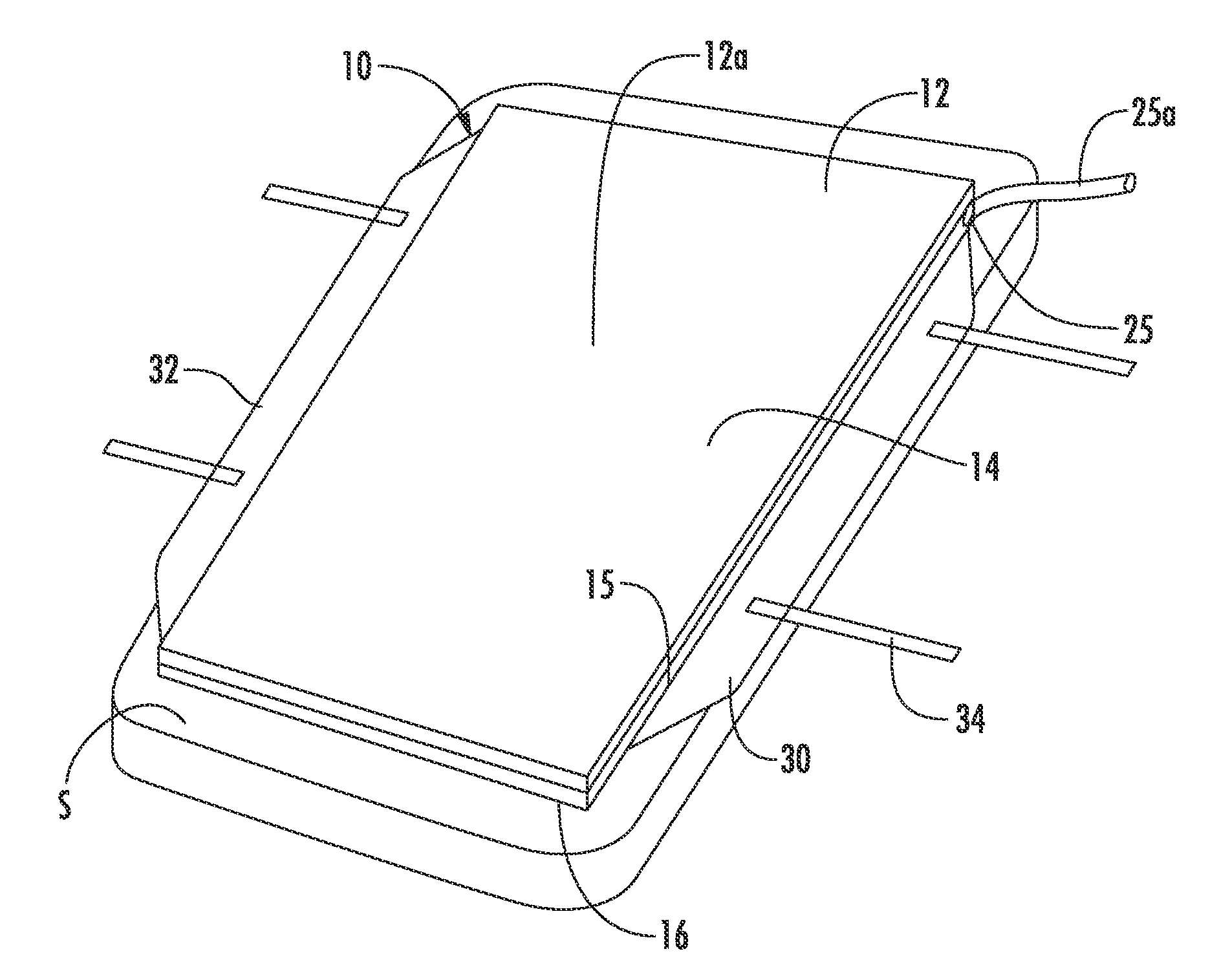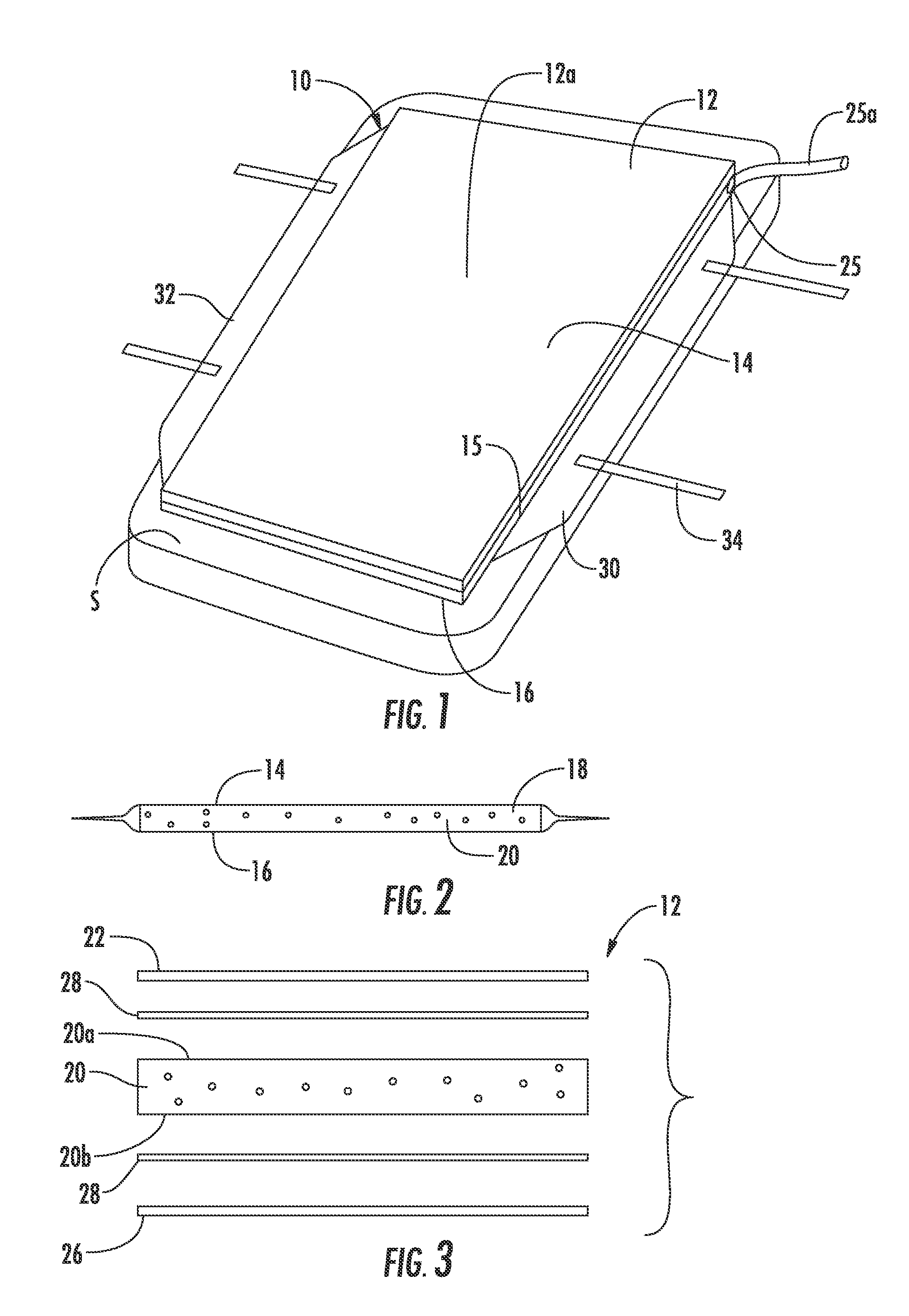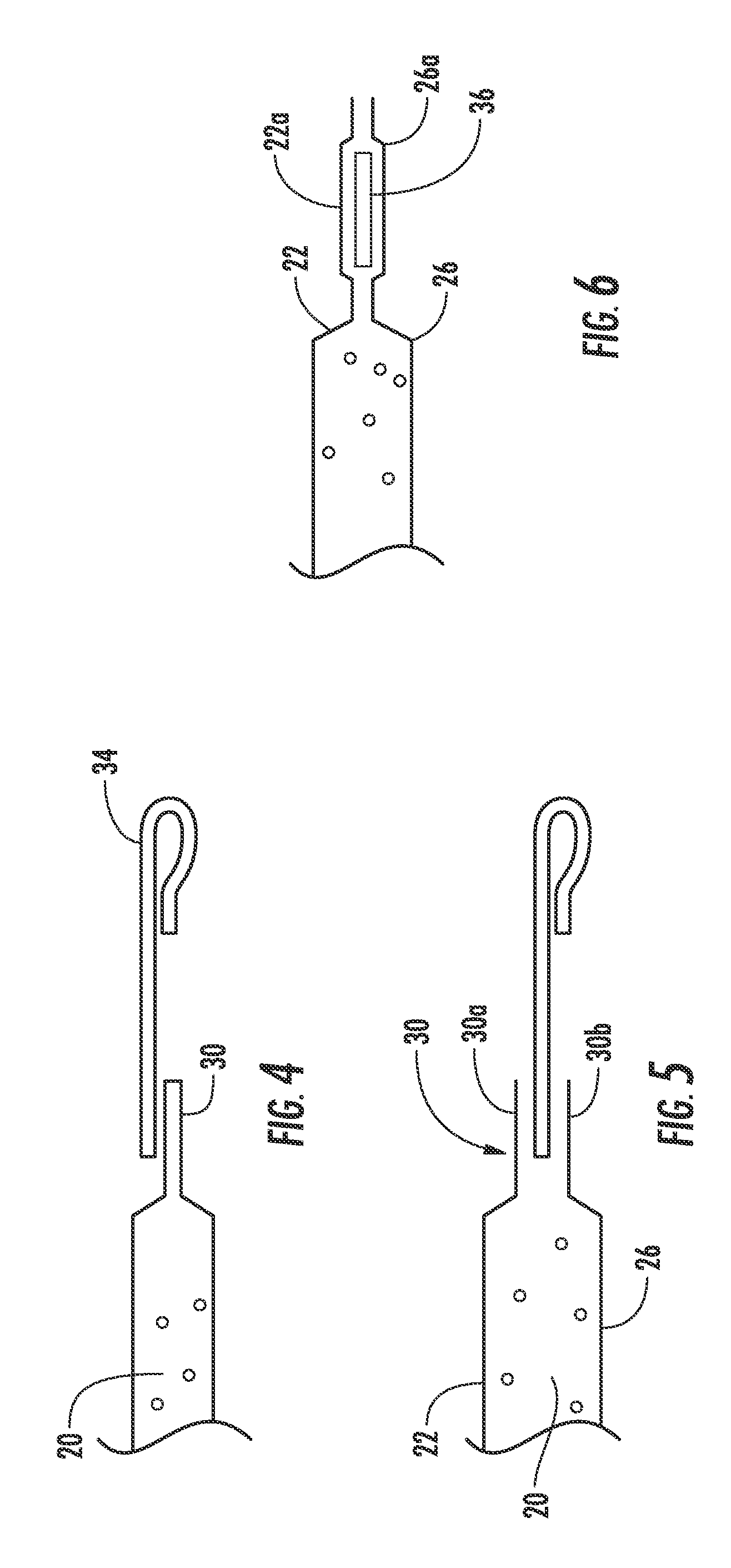Patient transfer device
a patient and device technology, applied in the field of patient transfer devices, can solve the problems of affecting the patient's comfort, affecting the comfort of patients, and affecting the comfort of patients, and achieve the effect of enhancing infection control and lowering air flow
- Summary
- Abstract
- Description
- Claims
- Application Information
AI Technical Summary
Benefits of technology
Problems solved by technology
Method used
Image
Examples
Embodiment Construction
[0056]Referring to FIG. 1, the numeral 10 generally designate a patient transfer device of the present invention. As will be more fully described below, the patient transfer device comprises an air mat 12 that generates an air film and, optionally, across a significant portion, if not substantially it's entire portion, of its lower surface for transferring a patient across a surface and between surfaces. Although the term “patient” is used herein, it should be understood that patient should be broadly construed to not only include people awaiting or under medical care, but also to include invalids or other people in need of assistance. Further, the mat may be operated with a lower air flow than conventional air bearing pallets while still achieving the same or better ease of transfer than prior art air bearing pallets. Because lower air flow is needed, device 10 may be operated with a smaller blower than used heretofore with the prior art air bearing pallets or with a pump, which sa...
PUM
 Login to View More
Login to View More Abstract
Description
Claims
Application Information
 Login to View More
Login to View More - R&D
- Intellectual Property
- Life Sciences
- Materials
- Tech Scout
- Unparalleled Data Quality
- Higher Quality Content
- 60% Fewer Hallucinations
Browse by: Latest US Patents, China's latest patents, Technical Efficacy Thesaurus, Application Domain, Technology Topic, Popular Technical Reports.
© 2025 PatSnap. All rights reserved.Legal|Privacy policy|Modern Slavery Act Transparency Statement|Sitemap|About US| Contact US: help@patsnap.com



